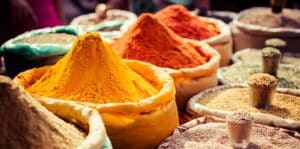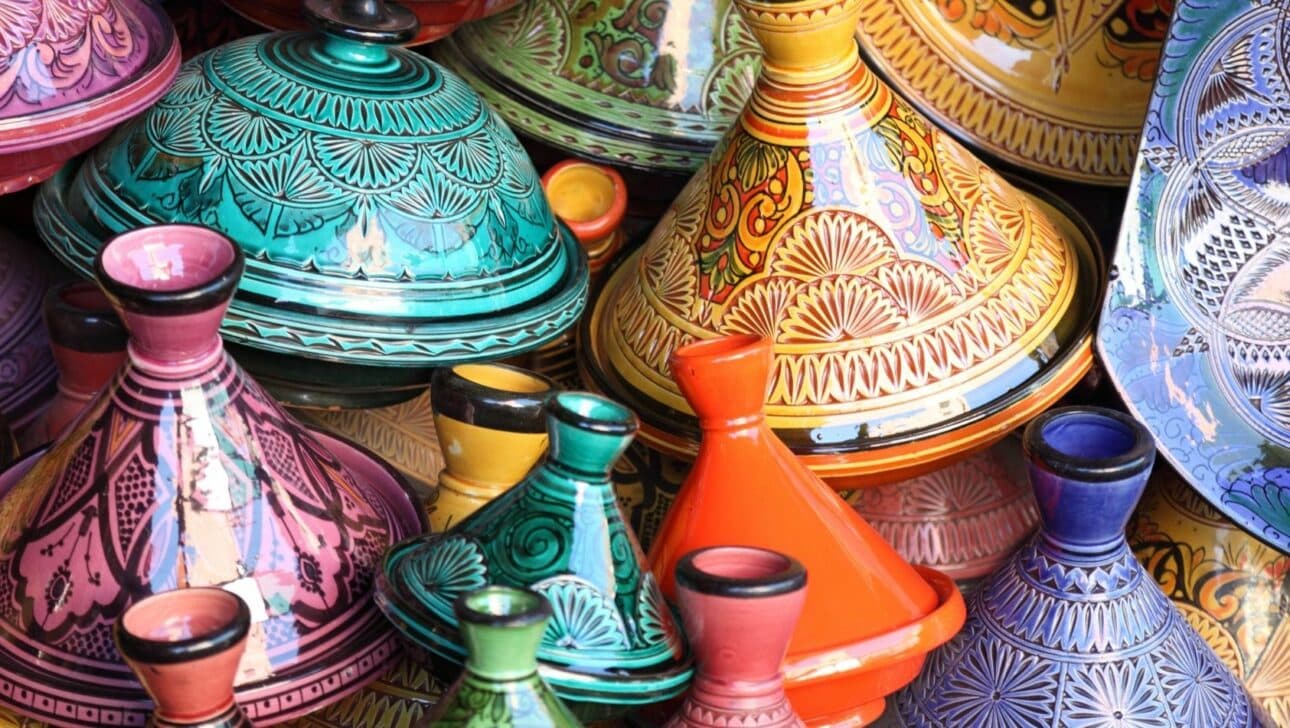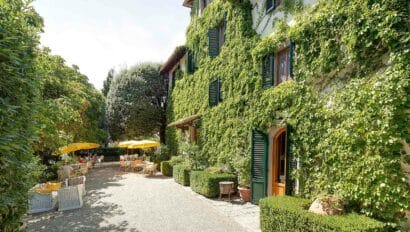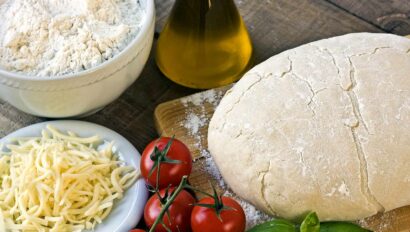Sweet yet savory. Spicy, but not fiery. Hearty AND light. These seem like contradictory terms, but when it comes to describing Moroccan food, the contrasts in a meal – even in a single bite – stand out. Like the country it comes from, Moroccan cuisine is a mélange of flavors, befitting the north African nation’s location, its unique blend of cultures and its colorful history. That said, there is one word that sums up Moroccan food: delicious.

Even though Moroccan restaurants are gaining in popularity here in the U.S., approaching a Moroccan menu can be daunting. There’s a lot going on, from the spices to the ingredients (rabbit and pigeon are common Moroccan proteins), and the unusual flavor combinations found in just about every Moroccan dish. (A chicken pie topped with powdered sugar and cinnamon? Yep.) Let’s take a step-by-step look at the food of Morocco; by the time we’re done, you’ll want to dive into a big bowl of harira soup, and maybe even try a bit of hare tagine.
Moroccan Spices
The first thing you’ll notice when you step into a Moroccan kitchen is the aroma. Moroccan food is loaded with spices, some familiar, and some tantalizingly exotic. Morocco’s location made it a hub for spice consumption: it sits on the northern coast of Africa, astride the Mediterranean, quite literally on Europe’s doorstep. For centuries, spice traders have brought their wares up through the African continent and into Europe via Spain; in return, Spanish and French colonial influences are found in Morocco’s food.

When we think of “spicy” food, we usually think of dishes that are hot, requiring an ever-present glass of water. Moroccan food is spicy, but in a different way – you’ll find cumin, cardamom, turmeric, cinnamon, saffron and other fragrant spices, always in abundance, but never overpowering. Keep an eye out for ras el hanout; literally translating to “the best of the shop”, it’s a common spice blend found in Moroccan marketplaces. If you do want some heat in your Moroccan dishes, look for items with harissa, a spice paste contain dried red chiles.
Classic Moroccan Ingredients
It’s easy to think of Morocco as a desert country, but the variety of climates – from the milder coastal temperatures to the alpine chill of the Atlas Mountains – will surprise new visitors. The oceans and the mountains mean that there are a multitude of different ingredients used in Moroccan cooking.
Chicken and lamb are the most common meats, but travelers to Morocco might encounter rabbit on the menu, and even fish – on the Moroccan coast, you’ll want to try the sardines stuffed with the spice paste called chermoula and then deep-fried.

Couscous is the national dish of Morocco, and is served with just about every main course. Bread is also a big part of a Moroccan meal; in Marrakesh and other cities, you’ll find an abundance of bakeries, as Moroccans love fresh bread – so much so that there’s a Moroccan tradition that if you drop a piece of bread to the floor, you need to pick it up and kiss it! Flatbreads are also very popular, and practical – some Moroccan meals are eaten without utensils, and flatbreads serve as a delicious substitute for a fork or spoon. Despite the prevalence of hot, dry weather, fruits and vegetables are a component of Moroccan cooking. Moroccans often enjoy a salad as the first course of a meal; eggplant, tomatoes, and carrots are among the vegetables you’ll find here. Dried fruits, especially dates and prunes, are found in many dishes. Lemons, both fresh and preserved, are a main ingredient of many dishes.
Best-Known Moroccan Dishes
The signature dish of Morocco is tagine. Tagine is a stew of meat, vegetables, and occasionally dried fruits. It’s named after the unique, cone-shaped clay pot in which it’s cooked, traditionally over a bed of hot coals.
The cone lid is what makes the stew taste so good: steam from the cooking stew rise to the top of the cone, where it condenses and drips back down into the mix, preserving both flavor and moisture. There are many varieties of tagine; you’ll definitely want to try the kefta – meatballs made with ground lamb and beef and cooked with tomatoes. When the kefta tagine is just about finished, eggs are added to the mix to poach.
As mentioned above, couscous is also extremely popular. Packaged couscous is the norm in Morocco, but there are still opportunities to try handmade couscous. Preparing it is a painstaking process – the grains of semolina are separated by hand, and then rolled together by hand until the tiny particles stick together. Eating it Moroccan style can be challenging as well – it’s tradition to eat couscous by hand, rolling it into balls and then deftly popping the couscous spheres into one’s mouth. Do this the wrong way, and the balls will crumble.
Perhaps the most unusual Moroccan dish you’ll come across is bastilla – also known as pastilla, or bisteeya.
The word “pastilla” is of Spanish origin; this dish actually originated in Spain and was brought to Morocco by the Moors. Chicken (or pigeon) is cooked with onions and spices, then shredded and mixed together with eggs. And then things get interesting. Almonds are crushed, sugar and cinnamon are added to the crushed almonds, and then both mixtures are layered in a crust that’s very similar to Greek phyllo dough. The pie is baked, and then more sugar and cinnamon are sprinkled on top. The result is sweet, savory, and delicious.
Moroccan Beverages
Moroccans love mint tea. The tea itself is a basic green leaf, much like the mint tea that you might find anywhere in the world. But there’s nothing quite like a Moroccan tea service.
Tradition holds that whenever a visitor arrives at a house, they must be served tea; it’s also an essential part of any trip to a Moroccan restaurant. The tea itself is served in small glasses, and poured from handcrafted silver teapots that run the gamut from “amazingly ornate” to “spectacularly lavish”. Your server will pour your tea with a flourish, starting just above the rim of the cup and finishing at a height that might make you a bit nervous. It’s a truly delightful and unforgettable experience.
You may also be surprised to learn that some excellent wine can be found in Morocco. French influence in Morocco has led to a small but dedicated winemaking industry that produces some great varietals. Moroccan reds pair exceptionally well with tagines; you can sip on a white while enjoying bastilla.
A Moroccan Culinary Adventure
Hungry yet? If all of this food sounds good, imagine what it tastes like under the stars, in front of the fire at a Berber encampment, in the happy company of your new Moroccan friends. There’s no better way to enjoy Moroccan food, and there’s no better time to visit Morocco.





